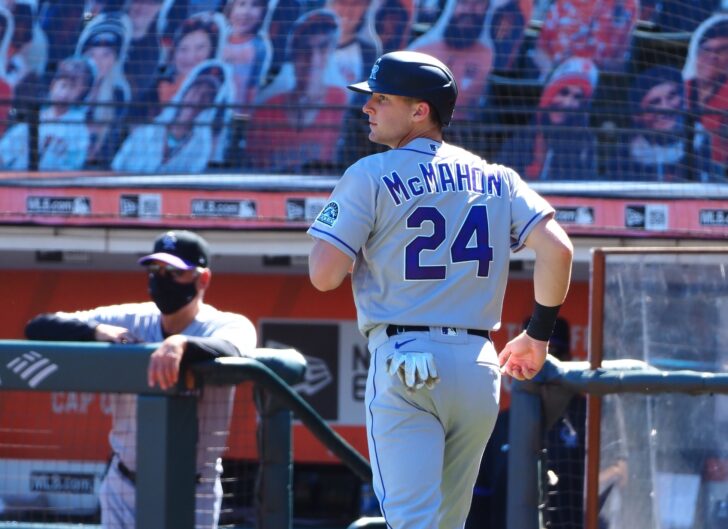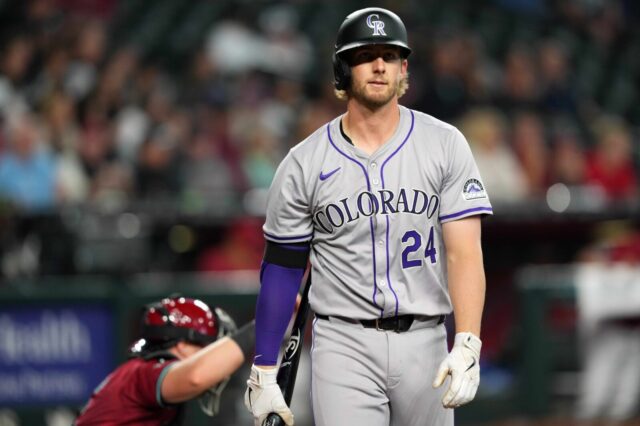The Colorado Rockies—more so than just about any other team in baseball, really—know what they have at the top of their roster. Nolan Arenado, Charlie Blackmon, Germán Márquez, and Trevor Story have carried the team for years, and the foursome has represented one of MLB’s very best cores during that time.
But beyond those four players, things have been a bit of a crapshoot for the Rockies. They received major contributions from the likes of Kyle Freeland, Jon Gray, DJ LeMahieu, and others in 2017-2018, when the Rockies were a combined 31 games over .500. But in each of the last two campaigns, that supporting cast of players just hasn’t been there.
| 1-4 fWAR | Rest of team fWAR | |
|---|---|---|
| 2017 | 17.8 | 14.6 |
| 2018 | 19.4 | 14.3 |
| 2019 | 18.0 | -0.7 |
| 2020* | 6.9 | -0.7 |
*Shortened season (more than willing to warm up the asterisk in preparation of a Dodgers World Series win)
That alone may be the reason why the Rockies have fallen off a cliff since the start of the 2019 season. The core, strong as it is, can’t carry a cast of characters who are below replacement level as a whole. Inconsistency and stalled major league development are slowly killing the Rox. If they want to reverse the trend, it has to start with these three players.
Ryan McMahon
At his best, McMahon is a good defensive players who hits for power and has above-average on-base skills. At his worst, he’s a league-leader in strikeout rate and doesn’t hit enough to make up for it.
Among full-time Rockies players with at least 200 plate appearances since 2018, McMahon ranks second (behind only the retired Chris Iannetta) in walk rate. He can get on base when things aren’t working in terms of getting the bat on the ball, a problem that—as we know—regularly occurs with the Rockies away from Coors Field. At the same time, only Sam Hilliard has a higher strikeout rate.
Cutting down on whiffs alone would help McMahon, who has made loud contact more often (46.1 percent hard-hit rate) than anyone on the team during that three-year timeframe. But if there was ever a guy launch angle can help, it’s McMahon; almost half of the balls he’s put in play over the last three seasons have been on the ground. As such, his 8.6 degree average launch angle puts him closer to Raimel Tapia and Tony Wolters than to Story and Arenado. Translating that hard contact into more fly balls can only mean good things for a player who has always had good raw power.
If McMahon can make that leap forward, he’ll be a great role player, even if he’s used in a platoon situation with the likes of Brendan Rodgers, Garrett Hampson, and Josh Fuentes. In fact, if he doesn’t figure it out in Denver, his batted ball profile will eventually make him a very intriguing buy-low candidate for more analytically inclined teams like, sadly, the Los Angeles Dodgers.
David Dahl
Dahl played in every single game down the stretch in 2016, when he burst onto the scene with a .315/.359/.500 line and had Rockies fans dreaming of an All-Star outfield for years to come. Since then, Dahl has appeared in less than 37 percent of the team’s games. When he’s healthy, he’s an All-Star-caliber player, as his .297/.346/.521 career line entering 2020 shows. But he’s rarely not inj, and even before he got hurt this past season, he was really struggling.
Dahl has star-level tools, and that characteristic alone will earn him chance after chance for years to come. His only real weaknesses on the field are that he’s a much better fit in a corner outfield spot than in center, and that his plate discipline skills—as evidenced by his below-average walk rate, chase percentage, and propensity for swings and misses—leave a little bit to be desired. But it’s the fact that he can’t be depended on to be a key contributor that’s most unfortunate for an organization that is relatively low on talent and resources.
A healthy Dahl, even with his shortcomings, would help the Rockies’ second-tier production issues immensely. We just don’t know if we’ll ever see that for a long enough period of time to really make a dent.
Raimel Tapia
Here’s the thing about Tapia: he’s going to swing the bat. No Rockies player over the last three seasons has swung at as many pitches—out of the zone, in the zone, you name it—than Tapia. Speaking as a fan, it’s refreshing to see a baseball player attack pitches and put the ball in play. It makes Tapia, who represents a big departure from the three-true-outcomes machines that have become far too prevalent in baseball, a blast to watch.
Unfortunately, the approach also limits how productive Tapia can be. Only half-dead Daniel Murphy and the light-hitting trio of Wolters, Gerardo Parra, and Pat Valaika have a lower barrel percentage than Tapia among Rockies players since the start of 2018. The majority of Tapia’s contact winds up on the ground and his sprint speed, which has declined since he first arrived in the big leagues, isn’t quite enough to put him in the top-tier territory of Story and Hampson when it comes to turning those grounders into infield hits.
What’s good about Tapia is that his defense—long considered a liability—took a huge leap forward in 2020, and he had stretches where he showed the ability to get on base at a level that is much more acceptable than his overall three-year walk rate of 5.4 percent, which is lowest on the team during that time.
Tapia’s not going to have a .392 batting average on balls in play, as he had in 2020, going forward. He’ll have to mix in some more walks and, preferably, a lot more power. But if the defense continues to play, the Rockies will likely be more willing to give Tapia the type of regular plate appearances he needs to improve upon his underlying issues offensively. And, if the result is anything like the consistency we saw from Tapia during his minor league career, the Rockies’ second-tier group of players will be in much better shape.



